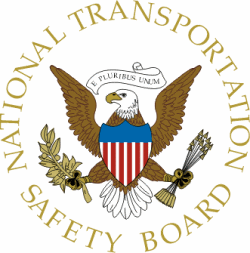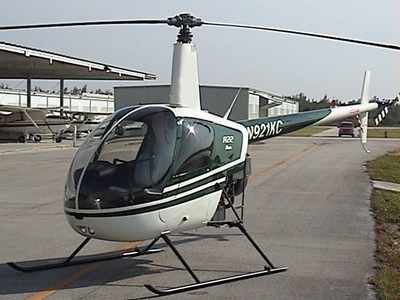State Representative And His Passenger Were Both Injured When The Robby Went Down
The NTSB has released its preliminary report in an accident involving Connecticut State Representative Bill Wadsworth who had taken a friend on a sightseeing flight in his personal Robinson R-22 helicopter. The accident occurred as Wadsworth was approaching South Meadows Heliport (CT73), where he reportedly regularly landed his helo. On the approach, he said he felt a "bump" in the rudder pedals. Witnesses on the ground said they heard a "bang" before the helicopter started to spin. The initial investigation did not turn up any obvious mechanical problems. Fortunately, both Wadsworth and his passenger, his girlfriend Irene Van, survived the accident, though Van suffered a broken back when the aircraft impacted terrain.

NTSB Identification: ERA12LA282
14 CFR Part 91: General Aviation
Accident occurred Saturday, April 14, 2012 in Farmington, CT
Aircraft: ROBINSON HELICOPTER R22 BETA, registration: N1152W
Injuries: 2 Serious.
This is preliminary information, subject to change, and may contain errors. Any errors in this report will be corrected when the final report has been completed.
On April 14, 2012, about 1840 eastern daylight time, a Robinson R22 helicopter, N1152W, was substantially damaged following a loss of control and an uncontrolled descent while approaching South Meadows Heliport (CT73), Farmington, Connecticut. The certificated private pilot and a passenger were seriously injured. Visual meteorological conditions prevailed, and no flight plan was filed for the flight that originated from Chester Airport (SNC), Chester, Connecticut around 1740, with the intended destination of CT73. The personal flight was conducted under the provisions of 14 Code of Federal Regulations Part 91.
According to the pilot, the helicopter departed SNC after it was serviced with 17 gallons of fuel. He completed a scenic flight lasting approximately one hour, before returning for landing at CT73. The heliport was a small paved pad on the east side of a large open field, surrounded by tall trees.
The approach was from the southeast on a northwesterly heading, and according to the pilot, the windsock "indicated a wind direction opposite" to their flight path. He then initiated a turn to "enter the landing area" when he felt a bump in the tail rotor control [pedals]. The pilot added that he applied left pedal to compensate for a right yaw, and the helicopter immediately "started to rotate" at an increasing yaw rate with full left pedal applied. The pilot stated that the rotation stopped when he pushed the collective control "full down" and applied aft cyclic. The helicopter then descended through the trees and collided with terrain.

A witness at the heliport heard the helicopter approach and described the sound as "all fine." She said the sound changed, and then she heard a loud bang.
FAA inspectors performed a preliminary examination of the helicopter at the accident site on the day of the accident. The examination revealed no pre-impact mechanical anomalies. The helicopter was removed from the site, and a detailed examination of the wreckage was scheduled.
According to FAA records, the helicopter was manufactured in 2006 and had accrued 1,825 total aircraft hours. Its most recent annual inspection was completed August 24, 2011 at 1,801 total aircraft hours.
The pilot held an FAA commercial pilot certificate with a rating for lighter-than-air balloon, and a private pilot certificate with a rating for rotorcraft-helicopter. His most recent FAA third class medical certificate was issued March 30, 2011. The pilot reported 850 total hours of flight experience on that date.
At 1853, the weather observation at Hartford-Brainard Airport (HFD), 9 miles east of the accident site included clear skies, temperature 19C, dewpoint -3 C, and winds from 190 at 8 knots. At 1753, the winds were from 190 at 7 knots, and at 1653, the winds were from 170 at 7 knots gusting to 15 knots. (Robinson R-22 file image)
 NTSB Final Report: Rutan Long-EZ
NTSB Final Report: Rutan Long-EZ ANN FAQ: Turn On Post Notifications
ANN FAQ: Turn On Post Notifications Classic Aero-TV: ICAS Perspectives - Advice for New Air Show Performers
Classic Aero-TV: ICAS Perspectives - Advice for New Air Show Performers ANN's Daily Aero-Linx (06.28.25)
ANN's Daily Aero-Linx (06.28.25) Aero-News: Quote of the Day (06.28.25)
Aero-News: Quote of the Day (06.28.25)




